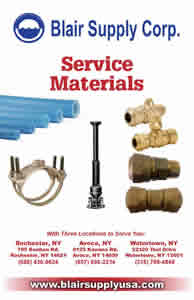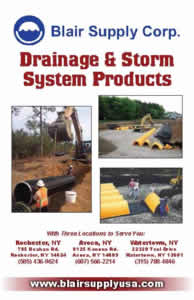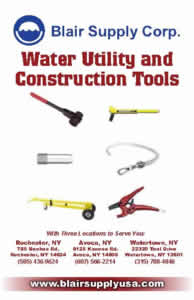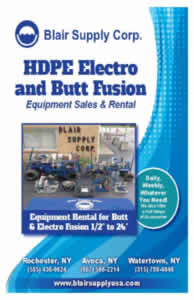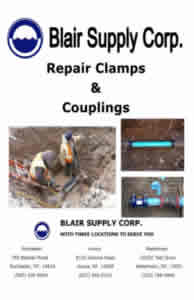Blog
Common Highway Products for Municipal Contractors
We all pass by highway construction, especially during those long summer drives, but do you ever stop to consider what goes into building, managing and completing all those complex projects? Not only does it take a lot of training and manpower, but also a lot of tools and materials which we’ll look at in today’s post.
Traffic Signs
Traffic signs are put up at the side of the road to give drivers’ instructions on road conduct and to ensure safety of both worker and driver. In the 1930s the United States adopted standardised pictorial signs to overcome language barriers, and enhance traffic communication. These signs have been more or less adopted across the world and are universal.
Today, traffic signs are standardized by the Manual on Uniform Traffic Control Devices (MUTCD) document issued by the Federal Highway Administration of the United States Department of Transportation. The specific shapes, colors, and fonts have now been passed into law. This document is used by state and municipal governments to ensure that the traffic control devices they use conform to the national standard.
Chains and Fasteners
Fasteners and chains are devices that attach one thing to another or hold something in place. There are thousands of different kinds of chains and fasteners for all types of different jobs. Screws, bolts, and nails are all fasteners. Unlike welding and soldering, chains and fasteners are temporary way to connect things which are useful for a variety of applications. Chains are also used to pull, drag or lift heavy pieces of equipment, blocks of cement, steel, or poles, just to name a few.
Rakes
There are three main types of rakes: steel-tine, polypropylene, and bamboo. Usually you’ll only see the more durable steel and polypropylene rakes used for road construction projects. Rakes are generally used for cleanup and to prevent rubble from obstructing work or passing vehicles.
Steel-tine and polypropylene rakes are rust-free making them ideal for outside use, especially in cities that rain a lot. They include wire that holds the tines together that can rust if the rake is not properly stored. Experts also suggest that they be coated with oil to extend their lifespan.
A steel tine rake has flat tines that are made of spring steel and snap back into position even if they are being severely bent during use. If the tines happen to remain bent, then you can use pliers to straighten them.
Plastic Safety Fence
These types of fences are excellent choice for temporarily marking off different areas to mark where construction or work is taking place, ensuring safety and ease of traffic flow. Mesh fences come in rolls and are either diamond or rectangular shaped. Light in weight, these fences are easy to move, install and remove after construction is over. Safety fences can be quickly and easily fastened to metal or wood posts using safety zip ties. There are several different types available in black, green, although the ones used in most highway construction projects are the high visibility orange, making them easy to see in poor light and weather conditions.
Safety Goggles
Safety Goggles that protect eyes are an important part of any highway project since they protect workers from flying debris such as rocks, sparks, and harmful splatters. If there is a work accident, the eyes are some of the most sensitive part of your body and should be protected. If a construction worker receives an eye injury, it can lead to at worst blindness and at the very least a long recovery period.
In the summer months, shaded safety goggles not only help protect your eyes from debris, but from the sun as well. Many of the high-grade safety goggles protect against UV rays which can damage your eyes after prolonged sun exposure. We also recommend seeing your local eye care professional at least once a year to ensure your eyes are healthy and are getting the best care.
You can choose from our many well-known and trusted brands of safety glasses like DeWalt, 3M, and Pyramex. For merely cosmetic purposes, you can choose from many shade colors like clear, blue, bronze, or even silver.
Safety Jackets and Vests
Reflective Jackets are some of the best pieces of clothing to ensure you are highly visible to passing cars. As working on or by the road carries many dangers, wear it any time on the job will help keep you safe.
You can choose to slip a reflective vest over your normal clothes or put on a reflective jacket. Both are good options and the only real difference is which one you’ll be more comfortable in working an 8 hour day.
If you choose a vest then the brand doesn’t matter all that much as most are fairly similar. However, jackets, which are more expensive, should last you a long time. There are many trusted brands like the Pyramex Class 3 Weatherproof Fleece Jacket that is brightly colored and has five pockets to store all your belongings while you work.
Hard Hats
A hard hat is a type of helmet used in highway construction projects to protect the head from injury due to falling objects and even electric shock. They are usually a neon orange color to make them visible in poor lighting and weather conditions. Mandatory in all construction sites, they come with a suspension band inside the helmet to help spread the helmet’s weight and any impact over the top of the head.
Hydraulic Hoses
Hydraulic hoses are designed to transport hydraulic fluid to or from hydraulic components. Hydraulic hoses can be made with a variety of materials depending on the requirements but rubber is the most common used.
Elastomeric or rubber hydraulic hoses range from low to high pressure and are often selected for their excellent flexibility. For highway products, Fluoropolymer, a carbon-based material, hoses provide a little extra protection against the elements and superior chemical and corrosion resistance.
Modern hydraulic hose typically consists of at least three parts: an inner tube that carries the fluid, a reinforcement layer, and a protective outer layer. The tube must be flexible and compatible with the type of fluid it needs to carry.
The reinforcement layer consists of one or more sheaths of braided wire fabric. The wire braid has a crisscross pattern around the perimeter of the hydraulic hose for protection and flexibility.
Blair Supplies the Best Highway Products for Municipal Contractors
Blair Supply Corporation has been in business since 1958 and is considered one of the top distributors in the water and wastewater industry, participating in over 25 local municipal organizations. The company has been in the family for three generations. In the 1940s, the company began with construction of waterlines.
Today, Blair Supply sells and rents specialty equipment such as tapping machines and fusion machines for High-Density Polyethylene (HDPE) Products market and remains an innovator and leader in the ever-changing water systems utility construction business.

